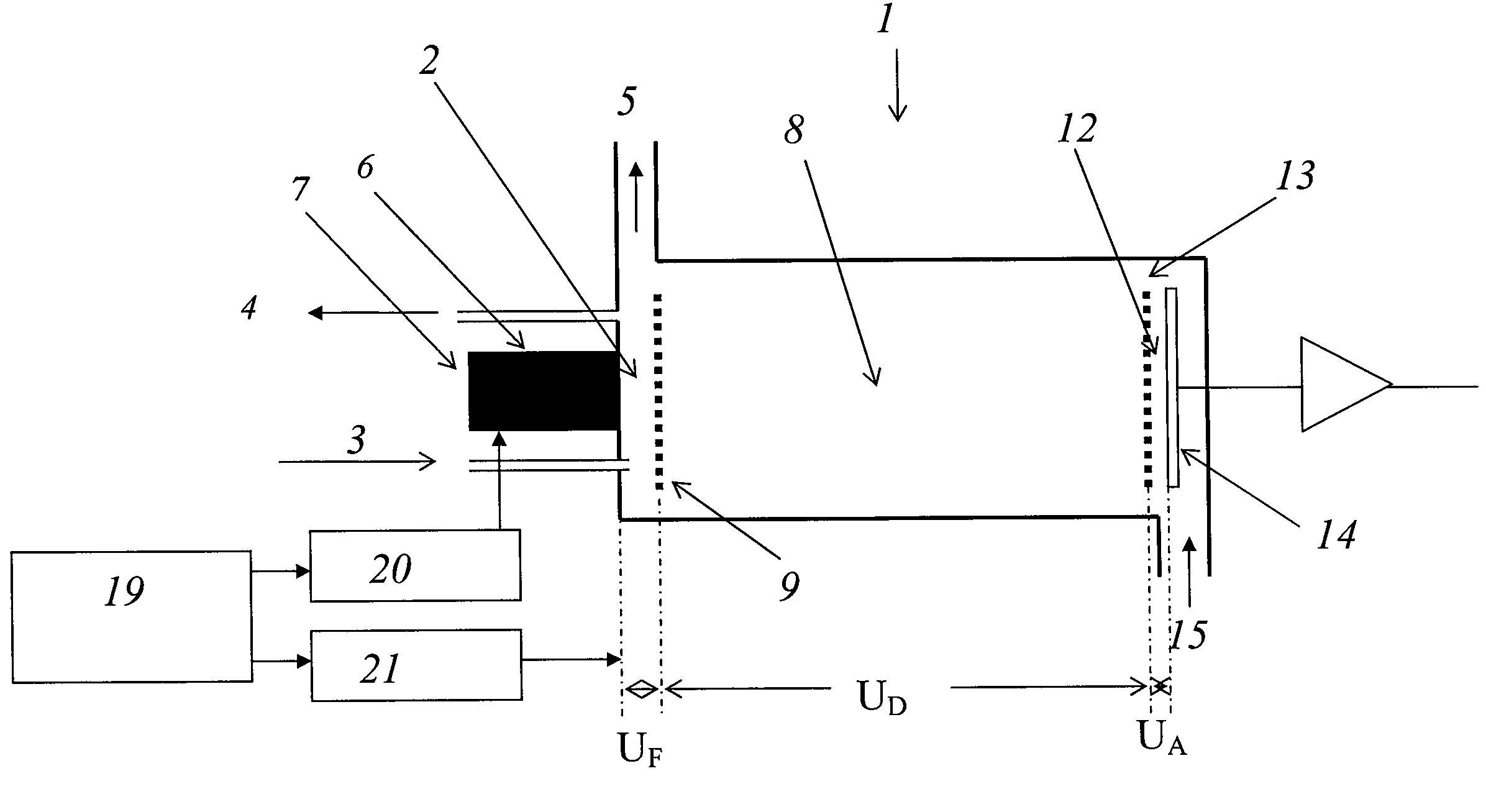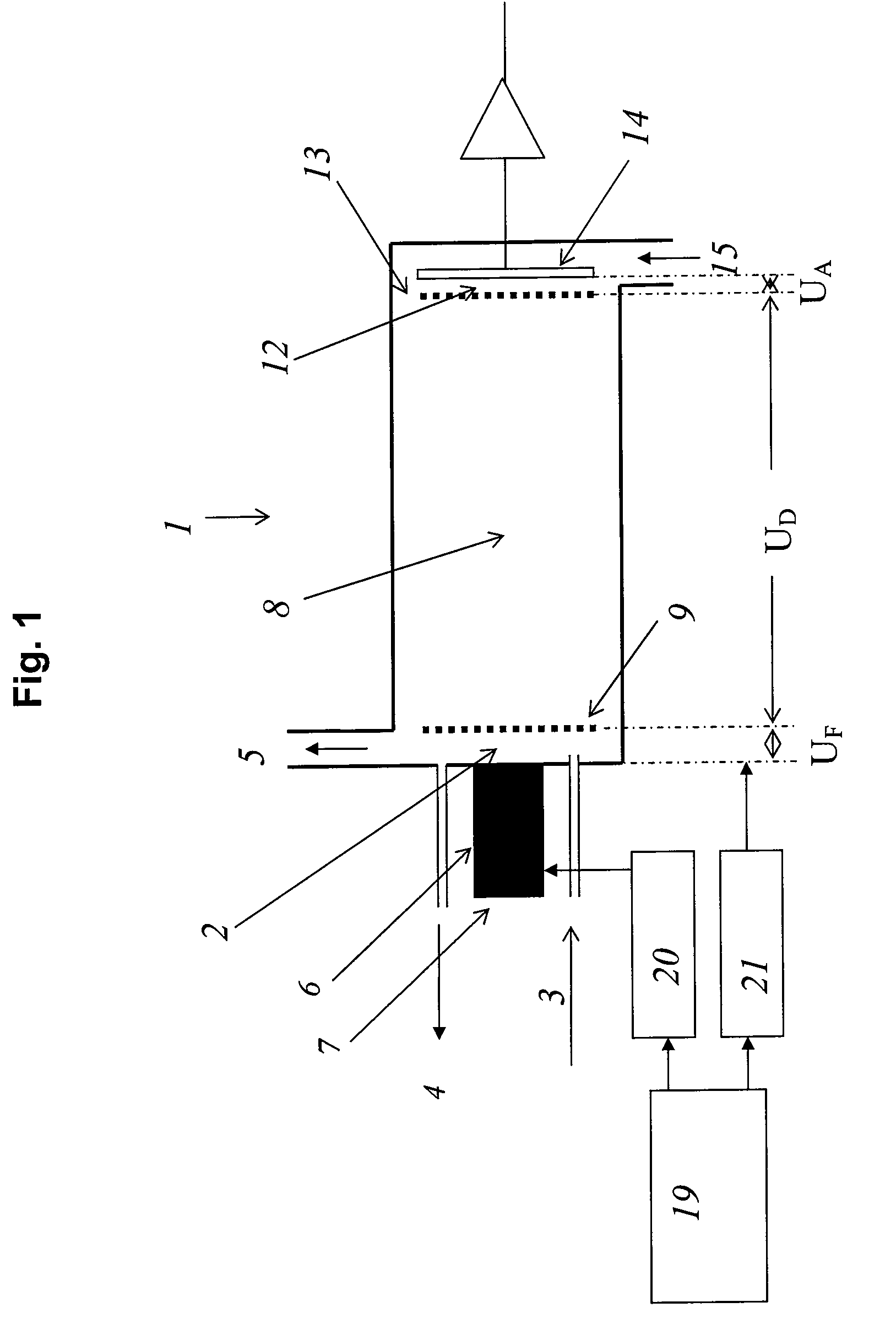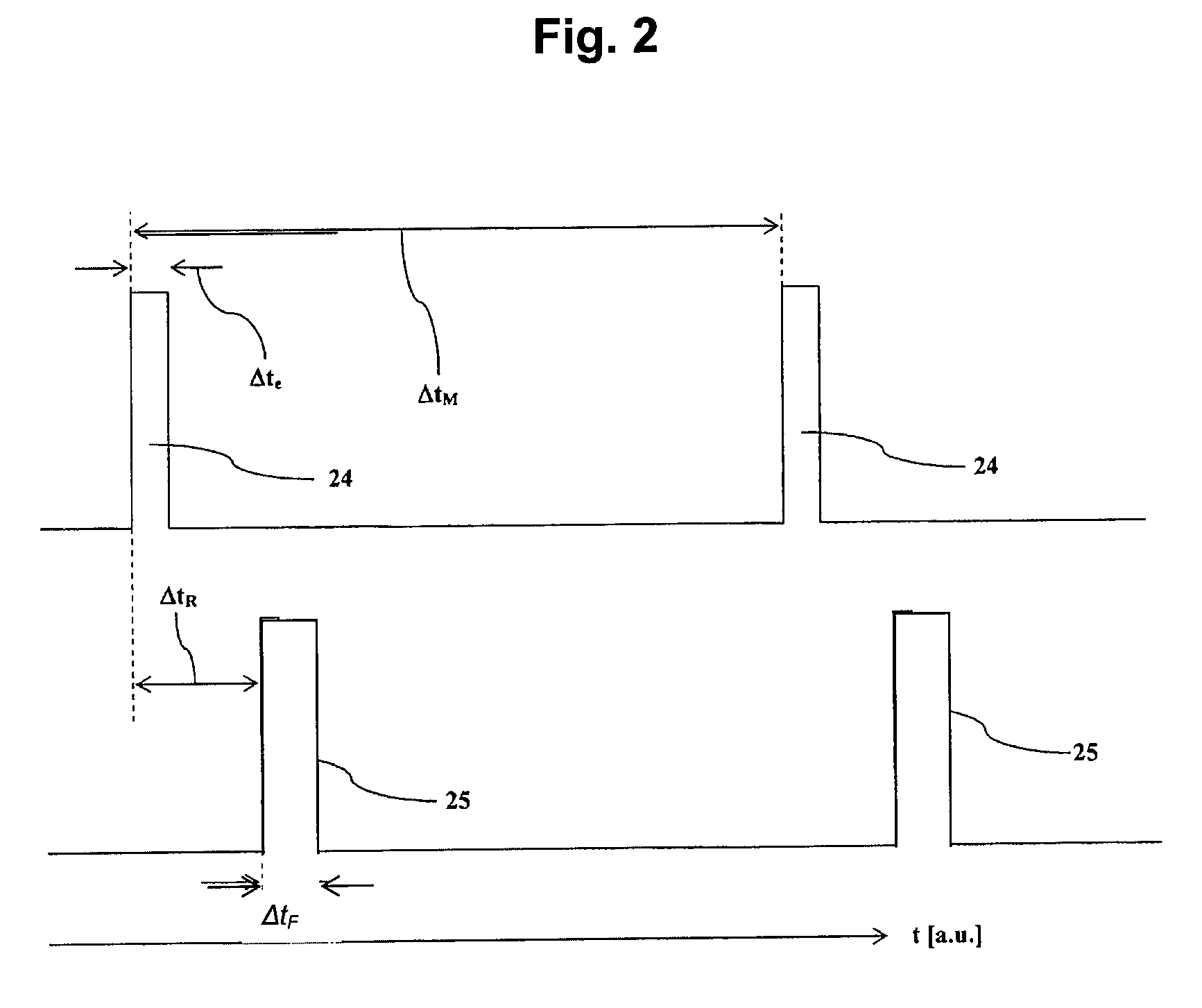Identification of analytes by an ion mobility spectrometer with formation of dimer analytes
a technology of dimer analytes and mobility spectrometers, which is applied in the field of identification of analytes by an ion mobility spectrometer with the formation of dimer analytes, can solve the problems of increasing instrument expense, requiring rather expensive and sophisticated spectrometer layouts, and no longer being able to identify ambiguous substances
- Summary
- Abstract
- Description
- Claims
- Application Information
AI Technical Summary
Benefits of technology
Problems solved by technology
Method used
Image
Examples
experimental examples
Example 1
[0048]Measurements were carried out with a spectrometer “Drager Ion Mobility Spectrometer GSM” with a reaction space around 3 mm in length, a drift space around 7 cm in length, and a detector space around 0.5 mm in length. The pulse width of the pulse Δte was 10 μs for all examples, the pulse width of the ion extraction pulse ΔtF was 110 μs for all examples. The residence times ΔtR are indicated each time at the left of the graph in FIGS. 3 to 5.
[0049]The transfer voltage UF was 200 V and the UD drift voltage was 2000 V. The pulsed electron source is described more closely in the article by F. Gunzer, A. Ulrich and W. Baether: “A novel non-radioactive electron source for ion mobility spectrometry”, Int. J. Ion Mobil. Spec., vol. 13 (2010), p. 9-16.
[0050]FIG. 3 shows IMS spectra of a mixture of ethylmethylketone and dimethylmethylphosphonate (DMMP). Peak 1 corresponds to the RIP, peak 2 to the monomer of ethylmethylketone and peak 3 to the monomer of DMMP. The dimer of ethyl...
example 2
[0051]FIG. 4 shows IMS spectra of a mixture of dimethylformamide and DMMP. Peak 1 corresponds to the RIP, peak 2 to the monomer of dimethylformamide and peak 3 to the monomer of DMMP. The dimer of dimethylformamide corresponds to peak 4 and the dimer of DMMP to peak 6. Peak 5 is a dimer of DMMP and dimethylformamide.
example 3
[0052]FIG. 5 shows IMS spectra of a mixture of ethanol and ethylmethylketone. Peak 1 corresponds to the RIP, peak 2 to the monomer of ethanol and peak 3 to the monomer of ethylmethylketone. The dimer of ethanol corresponds to peak 4 and the dimer of ethylmethylketone to peak 6. Peak 5 is a dimer of ethanol and ethylmethylketone.
[0053]The respective fundamental spectra with short residence time in the reaction space are shown bolded (each time in the foreground). If one increases the residence time of the ions in the reaction space, the monomers recombine or react further to form dimers. As a result, the monomers 2 and 3 each time fall off in intensity rather quickly, but the dimers at first increase in intensity or remain stable much longer than the monomers.
[0054]Thus, it is possible to identify and classify monomers and dimers even of unknown analytes in an IMS spectrum.
PUM
 Login to View More
Login to View More Abstract
Description
Claims
Application Information
 Login to View More
Login to View More - R&D
- Intellectual Property
- Life Sciences
- Materials
- Tech Scout
- Unparalleled Data Quality
- Higher Quality Content
- 60% Fewer Hallucinations
Browse by: Latest US Patents, China's latest patents, Technical Efficacy Thesaurus, Application Domain, Technology Topic, Popular Technical Reports.
© 2025 PatSnap. All rights reserved.Legal|Privacy policy|Modern Slavery Act Transparency Statement|Sitemap|About US| Contact US: help@patsnap.com



